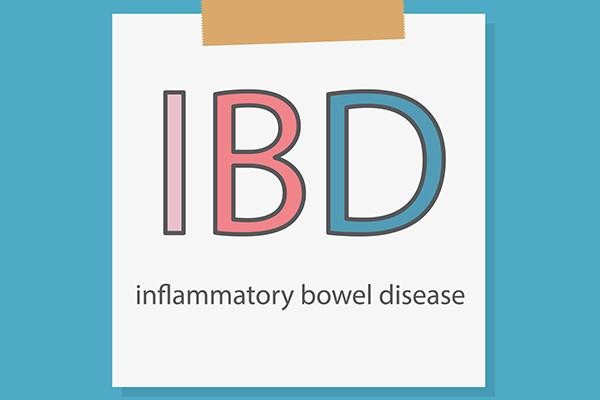
Can probiotics help calm inflammatory bowel disease?

Approximately three million Americans have inflammatory bowel disease (IBD). IBD is an umbrella term for Crohn’s disease and ulcerative colitis, illnesses marked by chronic or repeated bouts of inflammation in the digestive tract. Both types of IBD represent a complex interplay of genes, environment, and immune factors.
Current therapies for IBD suppress the immune system to reduce inflammation. But emerging research on the human microbiome may help scientists better understand and manage IBD. And some preliminary studies on cells, animals, and humans have investigated whether probiotics — which are sometimes called “good” bacteria — are beneficial for people with IBD.
The healthy microbiome: Building a barrier
The human intestinal microbiome is the vast community of trillions of helpful and harmful bacteria, viruses, fungi, and other microorganisms that inhabit our gut. Ideally, the lining of the gut acts as a barrier that prevents harmful bacteria and toxins from entering the bloodstream.
A healthy microbiome helps this lining block out harmful bacteria while enabling it to absorb nutrients. Beneficial bacteria in the microbiome promote a healthy, hospitable gut environment that limits inflammation and helps crowd out harmful bacteria.
Recent studies on human cells and in mice suggest that a healthy microbiome produces substances that
- nourish cells lining the colon, so that they form a tight barrier difficult for harmful bacteria to penetrate
- interact with immune cells in the gut, reducing inflammation
- prompt the gut lining to make mucus that acts as an additional barrier to harmful bacteria.
In animal studies, a healthy microbiome is essential to help build and maintain an effective barrier. Animals raised in the laboratory without a microbiome, or whose microbiome has been depleted by antibiotics, have intestinal linings that are easily damaged.
An unbalanced microbiome: Inflammation and damage
What happens if the microbiome doesn’t have a good balance of helpful and harmful bacteria? The gut lining may become increasingly permeable. That may allow potentially harmful bacteria and their toxins to cross into the intestinal tissue and then into the bloodstream, triggering inflammation that can damage the gut.
An imbalanced microbiome is known as dysbiosis. And the inflammatory cascade linked to dysbiosis is a hallmark of IBD.
Probiotics: More promise than evidence
Probiotics — live microorganisms in supplements or in fermented foods like kombucha, kefir, yogurt, and sauerkraut — have been proposed as therapies for IBD. The idea is that by eating beneficial bacteria we can restore and maintain a balanced microbiome, reduce inflammation, and improve the gut barrier. But what does the evidence say?
Thus far, no probiotic therapy is routinely prescribed for IBD. Small randomized studies have compared specific probiotics with standard immunosuppressive therapies for IBD. The studies measured IBD symptoms, remission rates, or quality of life. Results were mixed at best:
- Ulcerative colitis. Some studies suggest that certain bacterial strains, such as Bifidobacteria and Lactobacilli, are somewhat effective for ulcerative colitis, reducing symptoms, promoting remission, and improving quality of life. But these effects are modest compared to standard therapies, and probiotics have not shown enough benefit to be accepted in medical practice.
- Pouchitis. Some people with IBD may need surgery to remove the colon (large intestine). This can lead to inflammation in the remaining small intestine, which gets formed into a J-shaped pouch and attached to the anus. However, 25% to 45% of people who have a J-pouch later experience inflammation known as pouchitis. Several studies show that combining standard medication with a probiotic mix called VSL#3 effectively quells the symptoms and inflammation of pouchitis. VSL#3 contains eight strains of bacteria. It is used to treat chronic pouchitis, which is the only accepted use of probiotics in common practice for IBD.
- Crohn’s disease. Probiotics have not been studied as rigorously in Crohn’s disease as in ulcerative colitis. Most of the limited set of studies found that probiotics are no better than placebo in reducing symptoms or promoting remission.
Diet, fiber, and prebiotics: A role in IBD?
The makeup and activity of our microbiomes can be altered by diet. That’s true even if the foods you consume aren’t well-known probiotic stars like kombucha, yogurt, kefir, and other fermented foods.
Gut bacteria that break down dietary fiber are a cornerstone of a healthy microbiome. A high-fiber diet can boost the number of these bacteria, as well as their beneficial and anti-inflammatory effects.
Food ingredients that are not absorbed by the gut but are instead consumed by the gut microbiome are called prebiotics. We have limited — though promising — evidence supporting prebiotics for people with IBD. Currently, no specific prebiotic food or supplement is recommended for general use.
However, the Mediterranean diet, which encourages fiber-rich vegetables, whole grains, and legumes, may modestly reduce symptoms and markers of inflammation in IBD. While these effects are small and inconsistent, the Mediterranean diet improves overall health in people with or without IBD. Largely for this reason, the American Gastroenterology Association recommends it for people who have IBD.
The bottom line
Probiotics, and possibly even prebiotics, hold promise. But we don’t yet know how to harness their full potential for treating IBD. While current evidence suggests probiotics may one day be an effective way to help treat IBD, the complexity of the microbiome means that a one-size-fits-all approach is unlikely to work.
Many questions remain: Which strains of bacteria in the gut should we study? How do we determine the best cocktail of probiotics to reap maximum benefit? Given that everyone’s microbiome is different, is a personalized approach to probiotics the right strategy? How can we define ideal dosage and formulation of probiotics?
Delivery method (capsules, powders, foods), dosage, and duration of treatment all require more research. Until these questions are answered, probiotics and prebiotics remain complementary strategies in treating IBD alongside standard immunosuppressive therapies.
About the Authors

Jake Dockterman, MD, PhD, Contributor
Dr. Jake Dockterman is from Carlisle, MA and earned his bachelor’s degree in molecular and cellular biology from Harvard College. He completed his MD and PhD in immunology at Duke University, studying host-microbe interactions and mucosal … See Full Bio View all posts by Jake Dockterman, MD, PhD 
Loren Rabinowitz, MD, Contributor
Dr. Loren Rabinowitz is an instructor in medicine Beth Israel Deaconess Medical Center and Harvard Medical School, and an attending physician in the Inflammatory Bowel Disease Center at BIDMC. Her clinical research is focused on the … See Full Bio View all posts by Loren Rabinowitz, MD

Medication side effects: What are your options?

Medications can provide a host of health benefits. They may prevent or eliminate a disease. They might improve your quality of life and even help you live longer. But the medicines we take also have potential side effects. While listed side effects don’t always occur, it’s always possible.
And though that’s unfortunate, it also makes sense: while fighting the good fight against infection, cancer, or other health issues, medicines can also affect normal, healthy parts of the body. That can lead to bothersome symptoms and, sometimes, deadly consequences.
What are the most common and annoying side effects?
If you think you’re experiencing a medication side effect, you can check the National Library of Medicine database for the medicines you take to learn about their side effects.
Among the most common side effects caused by medicines are:
- nausea, constipation, diarrhea
- dry mouth
- drowsiness
- rash
- headache.
While the nature and severity of drug side effects vary widely, some are more bothersome than others. For example, sexual side effects can be especially distressing (and are likely underreported). And forgetfulness or trouble concentrating (often called “brain fog”) can have a serious impact on daily functioning, employment, and quality of life.
Which medication side effects are dangerous?
Though most side effects from medicines are more bothersome than dangerous, there are exceptions. Here are four serious drug side effects that require immediate medical attention.
- Anaphylaxis. This is a sudden allergic reaction affecting many parts of the body, including rash; swelling of the lips, tongue, or throat; and trouble breathing.
- Stevens-Johnson Syndrome (SJS) and toxic epidermal necrolysis (TEN). These two related allergic conditions are marked by severe, widespread rash, skin peeling, and fever. The main difference between them is that skin damage is more severe in TEN. Complications can be life-threatening, such as kidney and lung injury, or skin detachment similar to experiencing a serious burn.
- Drug reaction with eosinophilia and systemic symptoms (DRESS). This rare reaction to medications causes abnormal blood counts, rash, enlarged lymph nodes, and liver injury. Other organs, including the kidneys, lungs, and heart, may be harmed.
What about drug interactions?
Some medicines may cause no side effects until you start taking a second one. That’s because drugs can interact — that is, one drug alters the effects of another drug.
For example, if you take a blood thinner, also taking an anti-inflammatory medicine like ibuprofen or naproxen can suddenly increase your risk of bleeding.
There are thousands of known drug interactions. Medication prescribers, pharmacists, and computerized prescription ordering systems routinely check for them in advance so they can be avoided.
Are medication side effects ever a good thing?
Yes, indeed. In fact, some drugs developed to treat one condition have been approved for something entirely different because of what might be called positive side effects.
That’s how a blood pressure medicine (minoxidil) became a blockbuster treatment for hair loss (Rogaine and other brands). Another medicine (sildenafil), also developed for high blood pressure, was found to trigger erections in men. This lead to its approval as Viagra. There are many other examples of the good side of side effects.
When should you contact your health care provider?
If you suspect you’re experiencing a medication side effect, let your health care provider know. They can help you make the choice that’s best for you.
For serious or dangerous side effects like the examples noted above, it’s important to stop the drug and seek treatment right away. Let the FDA know as well. The FDA welcomes voluntary reporting of serious side effects so they can learn more about a drug’s impact on users, and take steps to improve its safety if necessary. Improvements might include new medication labeling, or even a recall.
For less serious side effects your first inclination might also be to stop the drug. But that’s not always the best choice. While stopping the drug may eliminate the side effect, you’ll also lose the drug’s benefit.
Here are some options your health care provider may suggest:
- Wait. If the side effect is minor, you could decide to put up with it to see if it goes away on its own as your body adjusts to the medication. If time doesn’t help, you may need to decide with your doctor whether the benefits of the medicine outweigh the side effects.
- Reduce. Your health care provider may suggest reducing the dose or how often you take the drug, which may improve or eliminate the side effects.
- Stop. You and your health care provider could decide to stop the medicine and consider a different treatment option, or reconsider whether treatment is still necessary.
- Add. Sometimes it’s reasonable to take a second drug to treat the first drug’s side effects. This option is not ideal. Taking a second drug to treat side effects from the first drug adds yet another medicine to your list. And that second drug could cause its own side effects, or even prompt the need to repeat this sequence with more medications. But sometimes adding another medication is a good option. For example, it’s reasonable to take an over-the-counter medicine (such as acetaminophen or ibuprofen) to treat a mild drug side effect (such as headache). Or if a medicine that causes a significant side effect is actually working well for a serious health condition, then adding a second medicine might make sense.
The bottom line
Drug developers may someday discover the perfect medicine, one that provides major health benefits without any risk of side effects. Until that happens, though, there are many ways to handle drug side effects. The challenge is figuring out which one is best for you.
About the Author

Robert H. Shmerling, MD, Senior Faculty Editor, Harvard Health Publishing; Editorial Advisory Board Member, Harvard Health Publishing
Dr. Robert H. Shmerling is the former clinical chief of the division of rheumatology at Beth Israel Deaconess Medical Center (BIDMC), and is a current member of the corresponding faculty in medicine at Harvard Medical School. … See Full Bio View all posts by Robert H. Shmerling, MD

Want a calmer brain? Try this

For neuroscientist Sara Lazar, a form of meditation called open awareness is as fundamental to her day as breathing.
“I just become aware that I am aware, with no particular thing that I focus on,” explains Lazar, an associate researcher in the psychiatry department at Massachusetts General Hospital and assistant professor of psychology at Harvard Medical School. “This sort of practice helps me become more aware of the subtle thoughts and emotions that briefly flit by, that we usually ignore but are quite useful to tune into.”
But meditation doesn’t just change your perspective in the moment. Some studies show certain types of meditation offer an array of benefits, from easing chronic pain and stress and lowering high blood pressure to help relieve anxiety and depression. And, as Lazar’s research has shown, meditation can actually change the structure and connectivity of brain areas that help us cope with fear and anxiety.
“It’s become really clear that all of our experiences shape our brain in one way or another,” Lazar says. “A lot of people talk about meditation being a mental exercise. Just as you build your physical muscles, you can build your calm muscles. Meditation is a very effective way of training those muscles.”
What counts as meditation?
More than you might have believed. An intriguing if somewhat perplexing aspect of meditation is that it encompasses a broad range of practices. “It’s clear what is not meditation, but there’s less consensus on what it is,” Lazar says.
Open awareness, Lazar’s go-to meditation, joins other forms, including focused awareness, slow deep breathing, guided meditation, and mantra meditation, along with many variations. At their core, Lazar says, is an awareness of the moment, noticing what you’re experiencing and nonjudgmentally disengaging from intrusive thoughts that might interfere with your ability to attend to this task.
Meditation can also involve sitting with eyes closed and paying attention to your body and any sensations that are present. A regular meditation practice typically involves slowing down, breathing, and observing inner experience.
“Meditation can involve flickering candles, breath awareness, or mantras — all of these things,” Lazar says. “But there’s definitely an element of focusing and regulating your attention.”
A close look at how meditation alters the brain
Small MRI imaging studies have zeroed in meditation’s effects on the amygdala, an almond-shaped structure deep within the brain that processes fear and anxiety as well as other emotions.
Lazar and her colleagues have spent many years laying the groundwork to show how practicing mindfulness-based stress reduction (MBSR) alters the amygdala after only about two months. The MBSR practice in this research consisted of weekly group meetings and daily home mindfulness practices, including sitting meditation and yoga.
What has their research found?
One key study involved 26 people with high levels of perceived stress. After an eight-week regimen of MBSR, brain scans showed the density of their amygdalae decreased, and these brain changes correlated to lower reported stress levels.
Building on this, Lazar and colleagues designed a study that focused on 26 people diagnosed with generalized anxiety, a disorder marked by excessive, ongoing, and often illogical anxiety levels. The researchers randomized participants to either practice MBSR or receive stress management education. These participants were compared to 26 healthy participants.
In this first-of-its-kind research, participants were shown a series of images with angry or neutral facial expressions while their brain activity was gauged using functional MRI imaging. At the beginning of the study, anxiety patients showed higher levels of amygdala activation in response to neutral faces than healthy participants. This suggests a stronger fear response to a nonthreatening situation.
But after eight weeks of MBSR, MRI imaging showed increased connections between the amygdala and the prefrontal cortex, a brain area crucial to emotional regulation. The amygdalae in participants with generalized anxiety no longer displayed a fear response to neutral faces. These participants also reported their symptoms had improved.
“It seems meditation helps to down-regulate the amygdala in response to things it perceives to be threatening,” Lazar says.
How can meditation benefits help us in daily life?
Lazar believes training your brain to stop and notice your thoughts in a slightly detached way can calm you amidst the muddle of work deadlines, family friction, or distressing news.
“That’s one of the biggest translations” of meditation to everyday benefits, she says. “The person or situation that is stressing you out won’t go away, but you can watch your reactivity to the situation in a mindful, detached way, which shifts your relationship to it.”
“It’s not indifference,” she adds. “It’s sort of like a bubble bursting — you realize you don’t need to keep going on this loop. Once you see that, it totally shifts your relationship to that reaction bubbling through your brain.”
Want to try meditation — or expand your practice?
Haven’t tried meditating? To get started, Lazar recommends the Three-Minute Breathing Space Meditation. This offers a quick taste of meditation, walking you through three pared-down but distinct steps. “It’s simple, fast, and anyone can do it,” she says.
Simple ways to expand this basic approach are:
- adding minutes, just as you might for exercise
- meditating outdoors
- pausing to notice how you feel after you meditate.
“Or try either doing a longer session or short hits throughout the day, such as a three-minute breathing break four to five times a day,” Lazar suggests.
Another way to enhance your practice is to use ordinary, repetitive moments throughout the day — such as reaching for a doorknob — as a cue to pause for five seconds and notice the sensation of your hand on the knob.
“As you walk from your office to your car, for instance, instead of thinking of all the things you have to do, you can be mindful while you’re walking,” Lazar says. “Feel the sunshine and the pavement under your feet. There are simple ways to work meditation into each day.”
About the Author

Maureen Salamon, Executive Editor, Harvard Women's Health Watch
Maureen Salamon is executive editor of Harvard Women’s Health Watch. She began her career as a newspaper reporter and later covered health and medicine for a wide variety of websites, magazines, and hospitals. Her work has … See Full Bio View all posts by Maureen Salamon
About the Reviewer
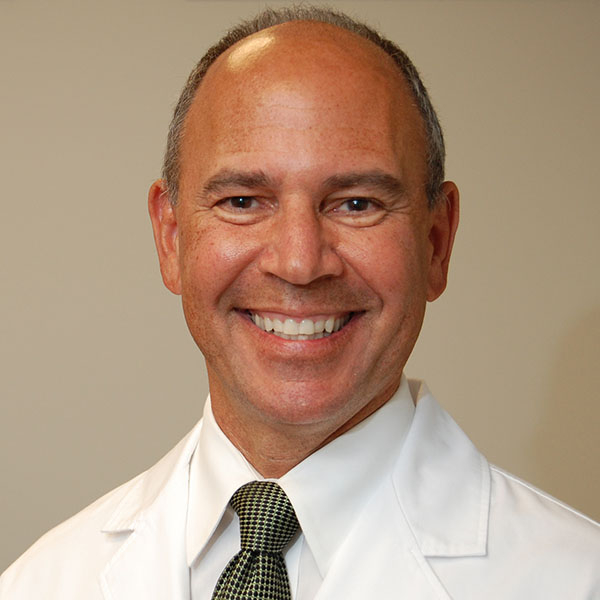
Howard E. LeWine, MD, Chief Medical Editor, Harvard Health Publishing; Editorial Advisory Board Member, Harvard Health Publishing
Dr. Howard LeWine is a practicing internist at Brigham and Women’s Hospital in Boston, Chief Medical Editor at Harvard Health Publishing, and editor in chief of Harvard Men’s Health Watch. See Full Bio View all posts by Howard E. LeWine, MD

No-cost, low-cost, and bigger splurges for climate-conscious gifts

Looking for gifts to give or donate this year? Climate-conscious gifts come in many guises. They may directly support our environment, for example, or aim to reduce fossil fuel use and electronic, textile, and food waste. Or they might offer enjoyable, creative ways to connect, reuse, and recycle — and possibly even regift.
“Our purchases and choices impact our climate and planet,” notes Dr. Wynne Armand, a physician and associate director of the Massachusetts General Hospital Center for the Environment and Health. Small steps like these do help, she says, even when the complex issues of climate change leading to health-compromising pollution, extreme weather, and a stressed planet feel so large and overwhelming.
“Unquestionably, we need bold, strong leaders to seek policy changes that address these problems at a systems level. But, as individuals we can make a difference through small steps,” says Dr. Armand. “Our choices help drive cultural and market shifts that hopefully push our neighbors, businesses, and policy leaders in the right direction.”
Four climate-conscious principles for gifting
- Channel the 5 Rs. Refuse, reduce, reuse, repurpose, and only then recycle. Say no to excess. Comic sections from print newspapers or beautiful images from last year’s calendars or magazines make great envelopes and gift wrap. If you’re choosing clothes, consider buying upcycled clothing or at resale shops, as appropriate.
- Beware of greenwashing. Eco-consciousness is big business, and the benefits of what you buy may be questionable. If you have a small lawn that needs infrequent maintenance, says Dr. Armand, keeping a trusty (albeit gas-fueled) mower could be a better choice for the planet than buying an electric mower, when factoring in upstream costs of natural resources and the carbon footprint required to manufacture and ship the new — and toss out the not-so-old. (Alternatively, maybe it’s time to replant that lawn with wildflowers and vegetables?)
- Skip what’s not needed. A new backpack crafted from water bottles? Another sweater to add to a closetful? If there’s no apparent need, think twice about purchases.
- Double down on experiences and connection. Think concert tickets, museum passes, or energetic options like rock-climbing gym passes and outdoor skills classes. “Gifts of experience are great, especially for people who already have all they need. If you buy for two or try a skills swap you also get to enjoy that time together,” says Dr. Armand.
25 climate-conscious gifts
Below are 25 suggestions for climate-conscious giving intended to work with many budgets.
Small but mighty climate-conscious gifts
1. Soft, warm sweaters, thick socks, or puffer vests can help people turn down the heat, saving energy resources and money.
2. Rechargeable batteries reduce materials and packaging waste.
3. An electric kettle, induction hot plate, or toaster oven can help limit indoor pollutants from gas stoves.
4. Perfectly Good Food: A Totally Achievable Zero Waste Approach to Home Cooking aims to pare back food waste and is available online.
5. Shop local artisans and craft fairs rather than buying online.
6. Plants brighten any room and help scrub the air: choose easy-care varieties, such as succulents, colorful coleus, and some herbs.
7. Protect the natural world: birds, bees, and other insects could use your help. Consider a small bird feeder that attaches to a window, a bee house, gardening tools, or seeds for a pollinator garden of colorful flowers.
8. Donate to national or worldwide climate or environmental organizations, local green spaces, and local conservation groups.
9. Gift green bonds for companies that support renewable energy — do your research, though, because greenwashing can be an issue.
10. Secret gifter-giftee swaps with large groups save sanity and throttle back waste.
Bigger splurges on climate-conscious gifts
11. When appliances reach the end of useful life, consider replacing gas stoves, water heaters, washers, dryers, and similar items with electric versions.
12. Plan a week of nearby tours and events with friends or family instead of flights and faraway travel.
13. Gift clothes and tools to enjoy the natural world: for example, warm, waterproof clothing and hiking boots, cross-country skis or skates, good binoculars for bird-watching.
14. Composters (or a weekly composting service subscription) recycle food scraps and organic waste into soil-enriching “black gold.”
15. Electric bikes may be a boon if they reduce reliance on vehicles using fossil fuels.
16. Help fund energy-efficient heat pumps or renewable solar energy.
17. Substantial donations and sustaining donor gifts to climate-conscious organizations can help in many ways.
No-cost climate-conscious gifts
18. Offer to gather information on big-ticket items in the big splurges section, including state and federal rebates and 0% loans for heat pumps, energy-efficient furnaces, solar panels, and energy-efficient appliances.
19. Teach a skill one-on-one, such as home repair, skating, chess, training for a mud run, knitting, cooking, orienteering, or gardening, or organize skills swaps with friends.
20. Gift the human power needed to replant portions of a lawn with vegetables or pollinator plants, or make a rain garden (note: automatic download) to help divert storm water.
21. Combine a no-cost reminder of the environmental benefits of no-mow May and leave the leaves campaigns with an offer to help peel back these layers come spring.
22. Friends often want to gift one another — costly generosity that can prompt last-minute candle-buying. As an alternative, gather a small group of friends for a clothing, accessories, and candle swap of new, never-took-the-price-tag-off, nearly new, and well-loved items.
23. Offer a DIY nature or bird walk for two. Try the free Pl@ntnet and Merlin apps if you can’t tell a pin oak from a petunia or a robin from a California condor.
24. If you buy for a ton of people, buy in bulk and figure out how to parcel it out in more sustainable packaging.
25. Make dinner, fudge, or another treat with friends — not completely free, but always a great way to gather your community.
About the Author

Francesca Coltrera, Editor, Harvard Health Blog
Francesca Coltrera is editor of the Harvard Health Blog, and associate editor of multimedia content for Harvard Health Publishing. She is an award-winning medical writer and co-author of Living Through Breast Cancer and The Breast Cancer … See Full Bio View all posts by Francesca Coltrera
About the Reviewer

Howard E. LeWine, MD, Chief Medical Editor, Harvard Health Publishing; Editorial Advisory Board Member, Harvard Health Publishing
Dr. Howard LeWine is a practicing internist at Brigham and Women’s Hospital in Boston, Chief Medical Editor at Harvard Health Publishing, and editor in chief of Harvard Men’s Health Watch. See Full Bio View all posts by Howard E. LeWine, MD
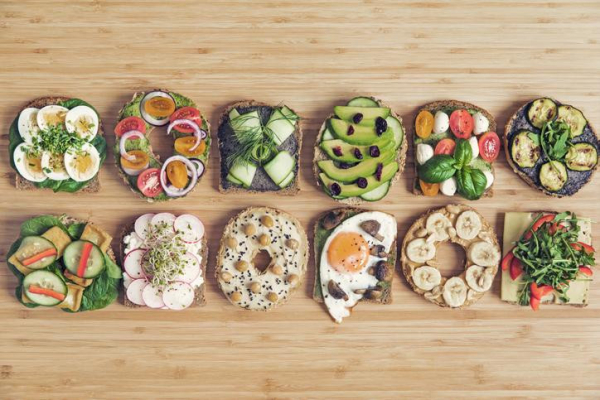
Celiac disease: Exploring four myths

Celiac disease is a digestive and immune disorder that can keep the body from absorbing necessary nutrients. “Our conception and awareness of celiac disease has evolved over the past few decades, but there are still aspects that remain poorly understood,” says Dr. Ciaran Kelly, medical director of the Celiac Center at Beth Israel Deaconess Medical Center and professor of medicine at Harvard Medical School.
Perhaps not surprisingly, misconceptions are widespread among the general public. One example? Many people assume that everyone who has celiac disease is plagued by abdominal pain, bloating, or diarrhea. But actually, many adults newly diagnosed with this inherited gluten intolerance don’t have these symptoms.
What’s more, gluten — the sticky protein found in grains such as wheat, barley, and rye — can cause gastrointestinal distress and other symptoms in people who don’t have celiac disease. Read on for a deeper dive into four myths and facts about celiac disease and related digestive conditions.
Myth # 1: Celiac disease is usually diagnosed at a young age
Not typically. While celiac disease can develop any time after a baby’s first exposure to gluten, it’s usually diagnosed much later in life. According to the National Celiac Association, the average age of diagnosis is between 46 and 56. Around 25% of people are diagnosed after age 60.
Celiac disease is slightly more common in women and among people with other autoimmune conditions, including type 1 diabetes, Hashimoto’s thyroiditis (a common cause of low thyroid levels), and dermatitis herpetiformis (a rare condition marked by an itchy, blistering rash).
“We don’t know why some people go from being susceptible to actually having celiac disease,” says Dr. Kelly. The prevailing theory is that some sort of physical or emotional stress — such as a viral infection, surgery, or anxiety from a stressful life event — may “flip the switch” and cause the disease to appear, he says. “Increasing numbers of people are being diagnosed at midlife and older, often after they’re found to have conditions such as anemia or osteoporosis caused by nutrient deficiencies,” says Dr. Kelly.
Myth #2: Celiac disease only affects the gut
When people have celiac disease, eating gluten triggers an immune system attack that can ravage the lining of the small intestine. A healthy small intestine is lined with fingerlike projections, called villi, that absorb nutrients. In celiac disease, the immune system attacks the villi, causing them to flatten and become inflamed — and thus unable to adequately absorb nutrients.
While gastrointestinal problems can occur, they aren’t always present. In fact, celiac disease can present with many different symptoms that affect the nervous, endocrine, and skeletal systems. A few examples are brain fog, changes in menstrual periods, or muscle and joint pain.
Myth # 3: Celiac disease versus gluten intolerance
If you feel sick after eating gluten, you probably have celiac disease, right? Actually, that may not be true. Some people have non-celiac gluten sensitivity (also called gluten intolerance), which can cause uncomfortable digestive symptoms after eating gluten. But gluten intolerance differs from celiac disease.
- Celiac disease is diagnosed with blood tests that look for specific antibodies. If antibodies are present, a definitive diagnosis requires an intestinal biopsy to look for signs of damage that characterize the condition.
- Non-celiac gluten sensitivity does not trigger antibodies or cause intestinal damage. Yet some people with this problem say they also experience brain fog, trouble concentrating, muscle aches and pain, and fatigue after eating gluten-containing foods.
“Non-celiac gluten sensitivity appears to be a real phenomenon, but it’s not well defined,” says Dr. Kelly. It’s unclear whether people experiencing it are intolerant to gluten or to something else in gluten-containing foods.
- One possibility is sugarlike molecules known as FODMAPs, which are found in many foods — including wheat. Short for fermentable oligosaccharides, disaccharides, monosaccharides, and polyols, gas and bloating can occur when gut bacteria feed on FODMAPs.
- Another possibility is an allergy to wheat, which can cause symptoms such as swelling, itching, or irritation of the mouth and throat after eating wheat. Other symptoms include a skin rash, stuffy nose, and headache, as well as cramps, nausea, and vomiting. Some people may develop a life-threating allergic reaction known as anaphylaxis.
Myth #4: A gluten-free diet always relieves the symptoms and signs of celiac disease
The sole treatment for celiac disease — adopting a diet that avoids all gluten-containing foods — doesn’t always help. This problem is known as nonresponsive celiac disease.
“About 20% of people with celiac disease have ongoing symptoms, despite their best efforts to stick to a gluten-free diet,” says Dr. Kelly. Others have intermittent signs and symptoms, particularly when they are accidentally exposed to gluten. Accidental exposures often happen when people eat prepared or restaurant foods that claim to be gluten-free but are not. Cross contamination with gluten-containing foods is another potential route.
Potential solutions to nonresponsive celiac disease are being studied. Three promising approaches are:
- Enzymes that break down gluten, which people could take alongside gluten-containing foods. “It’s a similar concept to the lactase pills taken by people who are lactose intolerant to help them digest dairy products,” says Dr. Kelly.
- Dampening the immune response to gluten by inhibiting an enzyme called tissue transglutaminase that makes gluten more potent as an antigen.
- Reprogramming the immune response to prevent the body from reacting to gluten.
About the Author

Julie Corliss, Executive Editor, Harvard Heart Letter
Julie Corliss is the executive editor of the Harvard Heart Letter. Before working at Harvard, she was a medical writer and editor at HealthNews, a consumer newsletter affiliated with The New England Journal of Medicine. She … See Full Bio View all posts by Julie Corliss
About the Reviewer
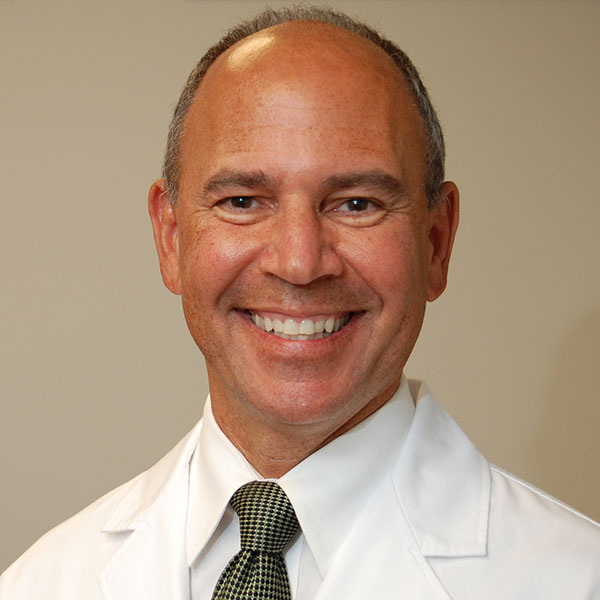
Howard E. LeWine, MD, Chief Medical Editor, Harvard Health Publishing; Editorial Advisory Board Member, Harvard Health Publishing
Dr. Howard LeWine is a practicing internist at Brigham and Women’s Hospital in Boston, Chief Medical Editor at Harvard Health Publishing, and editor in chief of Harvard Men’s Health Watch. See Full Bio View all posts by Howard E. LeWine, MD

Prostate cancer: Short-course radiation as effective as longer-term treatments

It used to be that radiation therapy for prostate cancer involved weeks or months of repeat visits to a clinic for treatment. Today that’s not necessarily true. Instead of giving small doses (called fractions) per session until the full plan is completed, radiation delivery is moving toward high-dose fractions that can be given with fewer sessions over shorter durations.
This “hypofractionated” strategy is more convenient for patients, and mounting evidence shows it can be accomplished safely. With one technology called stereotactic body radiation therapy (SBRT), patients can finish their treatment plans within a week, as opposed to a month or more. Several devices are available to deliver hypofractionated therapy, so patients may also hear it referred to as CyberKnife or by other brand names.
An SBRT session takes about 20 to 30 minutes, and the experience is similar to receiving an x-ray. Often, doctors will first insert small metal pellets shaped like grains of rice into the prostate gland. Called fiducials, these pellets function as markers that help doctors target the tumor more precisely, so that radiation beams avoid healthy tissue. During treatment, a patient lies still while the radiation-delivery machine rotates around his body, administering the therapy.
How good is SBRT at controlling prostate cancer? Results from a randomized controlled clinical trial show that SBRT and conventional radiotherapy offer the same long-term benefits.
How the study was conducted
The trial enrolled 874 men with localized prostate cancer, meaning cancer that is still confined to the prostate gland. The men ranged between 65 and 74 years in age, and all of them had prostate cancer with a low or intermediate risk of further progression. The study randomized each of the men to one of two groups:
- Treatment group: The 433 men in this group each got SBRT at the same daily dose. The treatment plan was completed after five visits given over a span of one to two weeks.
- Control group: The 441 men in this group got conventional radiotherapy over durations ranging from four to 7.5 weeks.
None of the men received additional hormonal therapy, which is a treatment that blocks the prostate cancer–promoting effects of testosterone.
What the study showed
After a median duration of 74 months (roughly six years), the research found little difference in cancer outcomes. Among men in the treatment group, 26 developed visibly recurring prostate cancer, or a spike in prostate-specific antigen (PSA) levels suggesting that newly-forming tumors were somewhere in the body (this is called a biochemical recurrence). By contrast, 36 men from the control group developed visible cancer or biochemical recurrence. Put another way, 95.8% of men from the SBRT group — and 94.6% of men in the control group — were still free of prostate cancer.
A word of caution
Earlier results published two years into the same study showed higher rates of genitourinary side effects among the SBRT-treated men. Typical genitourinary side effects include inflammatory reactions that increase pain during urination, or that can make men want to urinate more often. Some men develop incontinence or scar tissues that make urination more difficult. In all, 12% of men in the SBRT group experienced genitourinary side effects at two years, compared to 7% of the control subjects.
“Interestingly, patients who were treated with CyberKnife appeared to have lower significant toxicity at two years compared with those treated on other platforms,” said Dr. Nima Aghdam, a radiation oncologist at Beth Israel Deaconess Medical Center and an instructor of radiation oncology at Harvard Medical School. By five years, the differences in side effects between men treated with SBRT or conventional radiation had disappeared.
The authors advised that men might consider conventional radiation instead of SBRT if they have existing urinary problems before being treated for cancer. Patients with baseline urinary problems are “more likely to have long-term toxic effects,” the authors wrote, adding that the new findings should “allow for better patient selection for SBRT, and more careful counseling.”
“This is an important study that validates what’s becoming a standard practice,” said Dr. Marc Garnick, the Gorman Brothers Professor of Medicine at Harvard Medical School and Beth Israel Deaconess Medical Center, and editor in chief of the Harvard Medical School Guide to Prostate Diseases. “The use of a five-day treatment schedule has been well received by patients who live long distances from a radiation facility, given that treatment can be completed during the weekdays of a single week. As with any cancer treatment choice, the selection of the appropriate patient is crucial to minimize any potential side effects, and this can only be done after a careful consideration of the patient’s other medical conditions.”
“This elegant study will put to rest any questions regarding the validity of SBRT as a standard-of-care option for many patients with prostate cancer,” Dr. Aghdam added. “Importantly in this trial, we see excellent outcomes for many patients who were treated with radiation alone. As this approach gains broad acceptance in radiation oncology practices, it remains critical to carefully consider each patient based on their baseline characteristics, and employ the highest level of quality assurance in delivering large doses of radiation in fewer fractions. As the overall duration of radiation therapy gets shorter, every single treatment becomes that much more important.”
About the Author

Charlie Schmidt, Editor, Harvard Medical School Annual Report on Prostate Diseases
Charlie Schmidt is an award-winning freelance science writer based in Portland, Maine. In addition to writing for Harvard Health Publishing, Charlie has written for Science magazine, the Journal of the National Cancer Institute, Environmental Health Perspectives, … See Full Bio View all posts by Charlie Schmidt
About the Reviewer
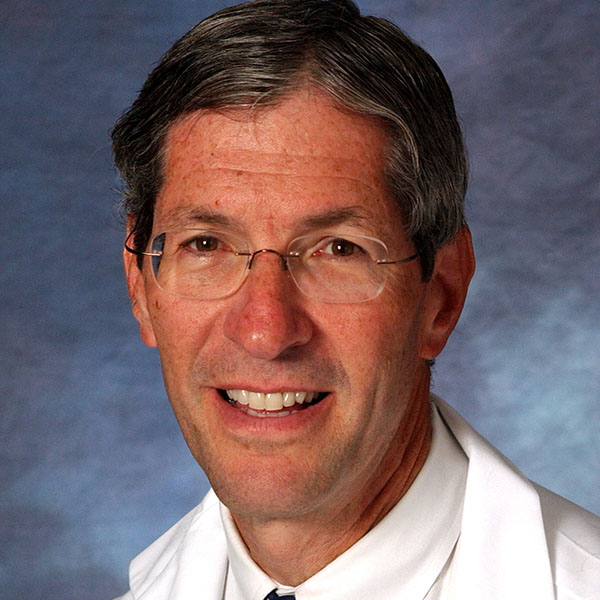
Marc B. Garnick, MD, Editor in Chief, Harvard Medical School Annual Report on Prostate Diseases; Editorial Advisory Board Member, Harvard Health Publishing
Dr. Marc B. Garnick is an internationally renowned expert in medical oncology and urologic cancer. A clinical professor of medicine at Harvard Medical School, he also maintains an active clinical practice at Beth Israel Deaconess Medical … See Full Bio View all posts by Marc B. Garnick, MD

Sexual violence can cast a long shadow on health

Sexual violence occurs throughout the world. A simple definition is any sexual act for which consent is not obtained or freely given, according to the Centers for Disease Control and Prevention (CDC). Rape, sexual coercion, and unwanted sexual contact are a few examples.
While many people heal fully in time, traumatic events like these may contribute to long-lasting health issues such as heart disease, gastrointestinal disorders, and certain mental health conditions. Being aware of these possibilities can help you — and your health care clinicians, if you choose to share with them — identify and respond to health issues promptly.
Our trauma doesn’t have to define us. Knowing how to get proper treatment and support can help people who have experienced sexual violence live fulfilling, healthy lives.
Who is affected by sexual violence?
Statistics vary on different forms of sexual violence. One in four women and one in 26 men in the US report rape or attempted rape during their lifetime, for example.
Anyone can experience sexual violence. But it disproportionately impacts certain groups, such as women, people who are racially or ethnically marginalized or who identify as LGBTQ+, and people with low incomes.
Possible emotional effects of sexual violence: What to know
Most people who experience sexual assault report that it affects their mental health. Depression and anxiety are very common after sexual assault. So is post-traumatic stress disorder (PTSD). A review of multiple studies estimates that 75% of people have symptoms of PTSD within a month of the incident, and about 40% continue to have PTSD one year after the incident.
PTSD symptoms may include
- flashbacks
- distressing or intrusive memories or nightmares
- severe anxiety
- dissociation.
People with PTSD may feel numb, angry, helpless, or overwhelmed. They may also avoid triggers that remind them of the traumatic event, like certain places, smells, or objects.
Remember, your mental health is an important part of your overall health and well-being. Consider finding or asking for a referral for a mental health specialist who specializes in trauma-focused psychotherapy. This might include cognitive processing therapy, exposure-based therapy, or eye movement desensitization and reprocessing (EMDR) therapy.
Possible health effects following sexual violence: What to know
Sexual violence can have immediate health effects, of course, and reaching out to get help is important.
Yet weeks, months, or even years later, some — though not all — people develop health issues related to their trauma. Research suggests sexual violence may increase risk for some chronic health conditions, such as
- heart disease
- diabetes
- high blood pressure
- chronic pain, including pelvic pain
- frequent headaches or migraines
- irritable bowel syndrome
- substance use disorder, including opiate use.
Seeking treatment can support your healing and well-being. Consider talking to your health care provider if you think you may be experiencing any of these symptoms or conditions.
How do I talk to my doctor about my history of sexual assault?
It’s important to feel safe and comfortable with your health provider. Here are four helpful tips to consider when seeking health care:
- Ask about trauma-informed care. While sometimes your choice of provider is limited, you may be able to ask to see a clinician who provides trauma-informed care. Trauma-informed care acknowledges how trauma impacts our health and promotes an individual’s sense of safety and control.
- Share as little or as much as you like. If you’re comfortable, you can tell your clinician you have a history of sexual assault or trauma. It is your choice whether you want to discuss your trauma history with your health professional. If you choose not to, you can still seek care for any health issues related to your sexual assault. This is a confidential part of your medical record, like any other part of your medical history.
- Starting a conversation. If you decide to share, you can start the conversation with one of these examples:
- “I want you to know I have a history of trauma.”
- “My trauma continues to affect my health today in [insert ways].”
If the provider asks follow-up questions about your traumatic experience, know that you can provide as little or as much detail as you feel comfortable sharing.
- Medical record confidentiality. Ask if your health care institution provides any extra levels of confidentiality for your medical record. Sometimes, this includes additional access restrictions or passwords to enter your health record. This can be especially important if you have an abusive partner, or another person that you are concerned will try to inappropriately gain access to your medical records.
How can you prepare for a physical exam and talk to a clinician?
- Know that you have choices. A physical exam may help you get care you want or need to address a health issue. Yet sometimes people who have been sexually assaulted find physical exams stressful, difficult, or even traumatic. If your clinician would like to perform a physical exam, know that you can always decline or schedule it for another day or time.
- Consider having a support person present. Sometimes a support person like a good friend may make you more comfortable during your visit or exam. You can also ask the provider to have a second staff member in the room, and request a gender preference.
- Ask the provider to explain things before each step. Before the exam, you can ask the clinician to make sure you understand the steps of the exam. Remember, you can choose to pause or stop the exam at any time.
- Your consent matters. No matter the setting, you always have the right to decide how and when your body is examined and/or touched. All health care providers are held to professional and ethical standards to protect your rights. If a clinician violates this, you have the right to report the incident to the health care employer and/or local law enforcement, and to seek care elsewhere.
A few final thoughts
Sexual violence is never okay under any circumstances. If this has happened to you, know that it is not your fault.
Traumatic experiences like sexual assault can affect the body and mind. They may increase the risk of long-term health issues such as PTSD, depression, substance use disorder, high blood pressure, and chronic pelvic pain. Yet all health conditions related to sexual assault can be effectively treated. And most people who experience trauma heal and go on to live meaningful, fulfilling lives.
About the Author

Rose McKeon Olson, MD, MPH, Contributor
Dr. Rose McKeon Olson is an associate physician in the department of medicine at Brigham and Women’s Hospital, and an instructor of medicine at Harvard Medical School. She has special research interests in trauma-informed care and … See Full Bio View all posts by Rose McKeon Olson, MD, MPH
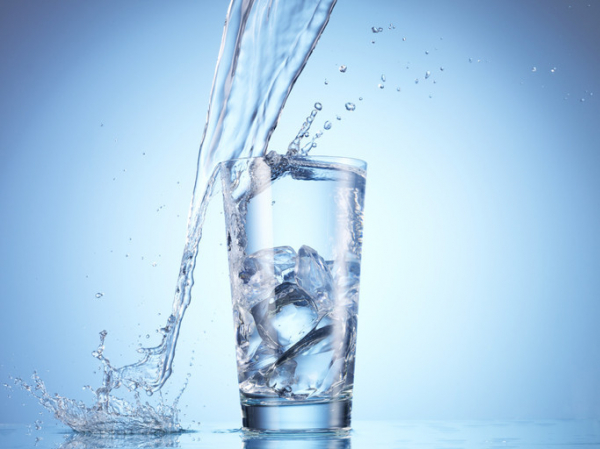
Does drinking water before meals really help you lose weight?

If you’ve ever tried to lose excess weight, you’ve probably gotten this advice: drink more water. Or perhaps it was more specific: drink a full glass of water before each meal.
The second suggestion seems like a reasonable idea, right? If you fill your stomach with water before eating, you’ll feel fuller and stop eating sooner. But did that work for you? Would drinking more water throughout the day work? Why do people say drinking water can help with weight loss — and what does the evidence show?
Stretching nerves, burning calories, and thirst versus hunger
Three top theories are:
Feel full, eat less. As noted, filling up on water before meals has intuitive appeal. Your stomach has nerves that sense stretch and send signals to the brain that it’s time to stop eating. Presumably, drinking before a meal could send similar signals.
- The evidence: Some small, short-term studies support this idea. For example, older study subjects who drank a full glass of water before meals tended to eat less than those who didn’t. Another study found that people following a low-calorie diet who drank extra water before meals had less appetite and more weight loss over 12 weeks than those on a similar diet without the extra water. But neither study assessed the impact of drinking extra water on long-term weight loss.
Burning off calories. The water we drink must be heated up to body temperature, a process requiring the body to expend energy. The energy spent on this — called thermogenesis — could offset calories from meals.
- The evidence: Though older studies provided some support for this explanation, more recent studies found no evidence that drinking water burned off many calories. That calls the thermogenesis explanation for water-induced weight loss into question.
You’re not hungry, you’re thirsty. This explanation suggests that sometimes we head to the kitchen for something to eat when we’re actually thirsty rather than hungry. If that’s the case, drinking calorie-free water can save us from consuming unnecessary calories — and that could promote weight loss.
- The evidence: The regulation of thirst and hunger is complex and varies over a person’s lifespan. For example, thirst may be dulled in older adults. But I could find no convincing studies in humans supporting the notion that people who are thirsty misinterpret the sensation for hunger, or that this is why drinking water might help with weight loss.
Exercise booster, no-cal substitution, and burning fat demands water
Being well-hydrated improves exercise capacity and thus weight loss. Muscle fatigue, cramping, and heat exhaustion can all be brought on by dehydration. That’s why extra hydration before exercise may be recommended, especially for elite athletes exercising in warm environments.
- The evidence: For most people, hydrating before exercises seems unnecessary, and I could find no studies specifically examining the role of hydration to exercise-related weight loss.
Swapping out high calorie drinks with water. Yes, if you usually drink high-calorie beverages (such as sweetened sodas, fruit juice, or alcohol), consistently replacing them with water can aid weight loss over time.
- The evidence: A dramatic reduction in calorie intake by substituting water for higher-calorie beverages could certainly lead to long-term weight loss. While it’s hard to design a study to prove this, indirect evidence suggests a link between substituting water for high-cal beverages and weight loss. Even so, just as calorie-restricting diets are hard to stick with over the long term, following a water-only plan may be easier said than done.
Burning fat requires water. Dehydration impairs the body’s ability to break down fat for fuel. So, perhaps drinking more water will encourage fat breakdown and, eventually, weight loss.
- The evidence: Though some animal studies support the idea, I could find no compelling evidence from human studies that drinking extra water helps burn fat as a means to lose excess weight.
The bottom line
So, should you bump up hydration by drinking water before or during meals, or even at other times during the day?
Some evidence does suggest this might aid weight loss, at least for some people. But those studies are mostly small or short-term, or based on animal data. Even positive studies only found modest benefits.
That said, if you think it’s working for you, there’s little downside to drinking a bit more water, other than the challenge of trying to drink if you aren’t particularly thirsty. My take? Though plenty of people recommend this approach, it seems based on a theory that doesn’t hold water.
About the Author

Robert H. Shmerling, MD, Senior Faculty Editor, Harvard Health Publishing; Editorial Advisory Board Member, Harvard Health Publishing
Dr. Robert H. Shmerling is the former clinical chief of the division of rheumatology at Beth Israel Deaconess Medical Center (BIDMC), and is a current member of the corresponding faculty in medicine at Harvard Medical School. … See Full Bio View all posts by Robert H. Shmerling, MD

21 spices for healthy holiday foods

The holiday season is one of the hardest times of the year to resist salty, fatty, sugary foods. Who doesn’t want to enjoy the special dishes and treats that evoke memories and meaning — especially during the pandemic? Physical distancing and canceled gatherings may make you feel that indulging is a way to pull some joy out of the season.
But stay strong. While it’s okay to have an occasional bite or two of marbled roast beef, buttery mashed potatoes, or chocolate pie, gorging on them frequently can lead to weight gain, and increased blood pressure, blood sugar, and “bad” LDL cholesterol.
Instead, skip the butter, cream, sugar, and salt, and flavor your foods with herbs and spices.
The bounty of nature’s flavor-makers go beyond enticing tastes, scents, and colors. Many herbs and spices contain antioxidants, flavonoids, and other beneficial compounds that may help control blood sugar, mood, and inflammation.
Amp up holiday foods with herbs and spices
Try flavoring your foods with some of the herbs and spices in the list below. Play food chemist and experiment with combinations you haven’t tried before. The more herbs and spices you use, the greater the flavor and health rewards. And that’s a gift you can enjoy all year through.
Allspice: Use in breads, desserts, and cereals; pairs well with savory dishes, such as soups, sauces, grains, and vegetables.
Basil: Slice into salads, appetizers, and side dishes; enjoy in pesto over pasta and in sandwiches.
Cardamom: Good in breads and baked goods, and in Indian dishes, such as curry.
Cilantro: Use to season Mexican, Southwestern, Thai, and Indian foods.
Cinnamon: Stir into fruit compotes, baked desserts, and breads, as well as Middle Eastern savory dishes.
Clove: Good in baked goods and breads, but also pairs with vegetable and bean dishes.
Cumin: Accents Mexican, Indian, and Middle Eastern dishes, as well as stews and chili.
Dill weed: Include in potato dishes, salads, eggs, appetizers, and dips.
Garlic: Add to soups, pastas, marinades, dressings, grains, and vegetables.
Ginger: Great in Asian and Indian sauces, stews, and stir-fries, as well as beverages and baked goods.
Marjoram: Add to stews, soups, potatoes, beans, grains, salads, and sauces.
Mint: Flavors savory dishes, beverages, salads, marinades, and fruits.
Nutmeg: Stir into fruits, baked goods, and vegetable dishes.
Oregano: Delicious in Italian and Mediterranean dishes; it suits tomato, pasta, grain dishes, and salads.
Parsley: Enjoy in soups, pasta dishes, salads, and sauces.
Pepper (black, white, red): Seasons soups, stews, vegetable dishes, grains, pastas, beans, sauces, and salads.
Rosemary: Try it in vegetables, salads, vinaigrettes, and pasta dishes.
Sage: Enhances grains, breads, dressings, soups, and pastas.
Tarragon: Add to sauces, marinades, salads, and bean dishes.
Thyme: Excellent in soups, tomato dishes, salads, and vegetables.
Turmeric: Essential in Indian foods; pairs well with soups, beans, and vegetables.
About the Author

Heidi Godman, Executive Editor, Harvard Health Letter
Heidi Godman is the executive editor of the Harvard Health Letter. Before coming to the Health Letter, she was an award-winning television news anchor and medical reporter for 25 years. Heidi was named a journalism fellow … See Full Bio View all posts by Heidi Godman
About the Reviewer
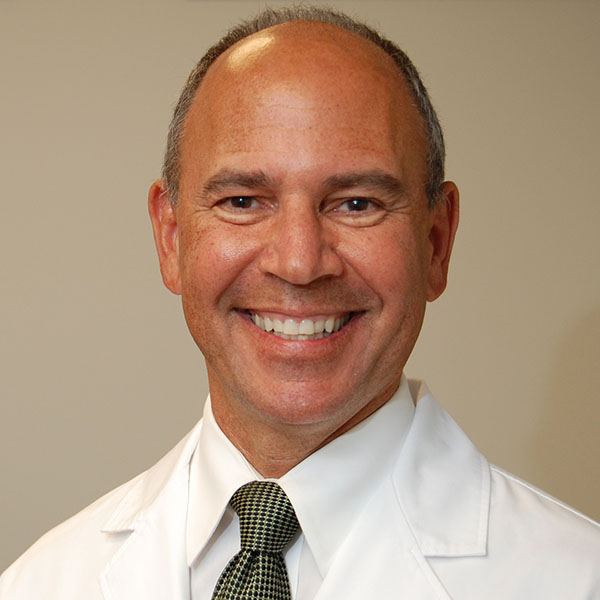
Howard E. LeWine, MD, Chief Medical Editor, Harvard Health Publishing; Editorial Advisory Board Member, Harvard Health Publishing
Dr. Howard LeWine is a practicing internist at Brigham and Women’s Hospital in Boston, Chief Medical Editor at Harvard Health Publishing, and editor in chief of Harvard Men’s Health Watch. See Full Bio View all posts by Howard E. LeWine, MD

Wildfires: How to cope when smoke affects air quality and health

As wildfires become more frequent due to climate change and drier conditions, more of us and more of our communities are at risk for harm. Here is information to help you prepare and protect yourself and your family.
How does wildfire smoke affect air quality?
Wildfire smoke contributes greatly to poor air quality. Just like fossil fuel pollution from burning coal, oil, and gas, wildfires create hazardous gases and tiny particles of varying sizes (known as particulate matter, or PM10, PM2.5, PM0.1) that are harmful to breathe. Wildfire smoke also contains other toxins that come from burning buildings and chemical storage.
The smoke can travel to distant regions, carried by weather patterns and jet streams.
How does wildfire smoke affect our health?
The small particles in wildfire smoke are the most worrisome to our health. When we breathe them in, these particles can travel deep into the lungs and sometimes into the bloodstream.
The health effects of wildfire smoke include eye irritation, coughing, wheezing, and difficulty breathing. The smoke may also increase risk for respiratory infections like COVID-19. Other possible serious health effects include heart failure, heart attacks, and strokes.
Who needs to be especially careful?
Those most at risk from wildfire smoke include children, older adults, outdoor workers, and anyone who is pregnant or who has heart or lung conditions.
If you have a chronic health condition, talk to your doctor about how the smoke might affect you. Find out what symptoms should prompt medical attention or adjustment of your medications. This is especially important if you have lung problems or heart problems.
What can you do to prepare for wildfire emergencies?
If you live in an area threatened by wildfires, or where heat and dry conditions make them more likely to occur:
- Create an evacuation plan for your family before a wildfire occurs.
- Make sure that you have several days on hand of medications, water, and food that doesn't need to be cooked. This will help if you need to leave suddenly due to a wildfire or another natural disaster.
- Regularly check this fire and smoke map, which shows current wildfire conditions and has links to state advisories.
- Follow alerts from local officials if you are in the region of an active fire.
What steps can you take to lower health risks during poor air quality days?
These six tips can help you stay healthy during wildfire smoke advisories and at other times when air quality is poor:
- Stay aware of air quality. AirNow.gov shares real-time air quality risk category for your area accompanied by activity guidance. When recommended, stay indoors, close doors, windows, and any outdoor air intake vents.
- Consider buying an air purifier. This is also important even when there are no regional wildfires if you live in a building that is in poor condition. See my prior post for tips about pollution and air purifiers. The EPA recommends avoiding air cleaners that generate ozone, which is also a pollutant.
- Understand your HVAC system if you have one. The quality and cleanliness of your filters counts, so choose high-efficiency filters if possible, and replace these as needed. It's also important to know if your system has outdoor air intake vents.
- Avoid creating indoor pollution. That means no smoking, no vacuuming, and no burning of products like candles or incense. Avoid frying foods or using gas stoves, especially if your stove is not well ventilated.
- Make a "clean room." Choose a room with fewer doors and windows. Run an air purifier that is the appropriate size for this room, especially if you are not using central AC to keep cool.
- Minimize outdoor time and wear a mask outside. Again, ensuring that you have several days of medications and food that doesn't need to be cooked will help. If you must go outdoors, minimize time and level of activity. A well-fitted N95 or KN95 mask or P100 respirator can help keep you from breathing in small particles floating in smoky air (note: automatic PDF download).
About the Author

Wynne Armand, MD, Contributor
Dr. Wynne Armand is a physician at Massachusetts General Hospital (MGH), where she provides primary care; an assistant professor in medicine at Harvard Medical School; and associate director of the MGH Center for the Environment and … See Full Bio View all posts by Wynne Armand, MD